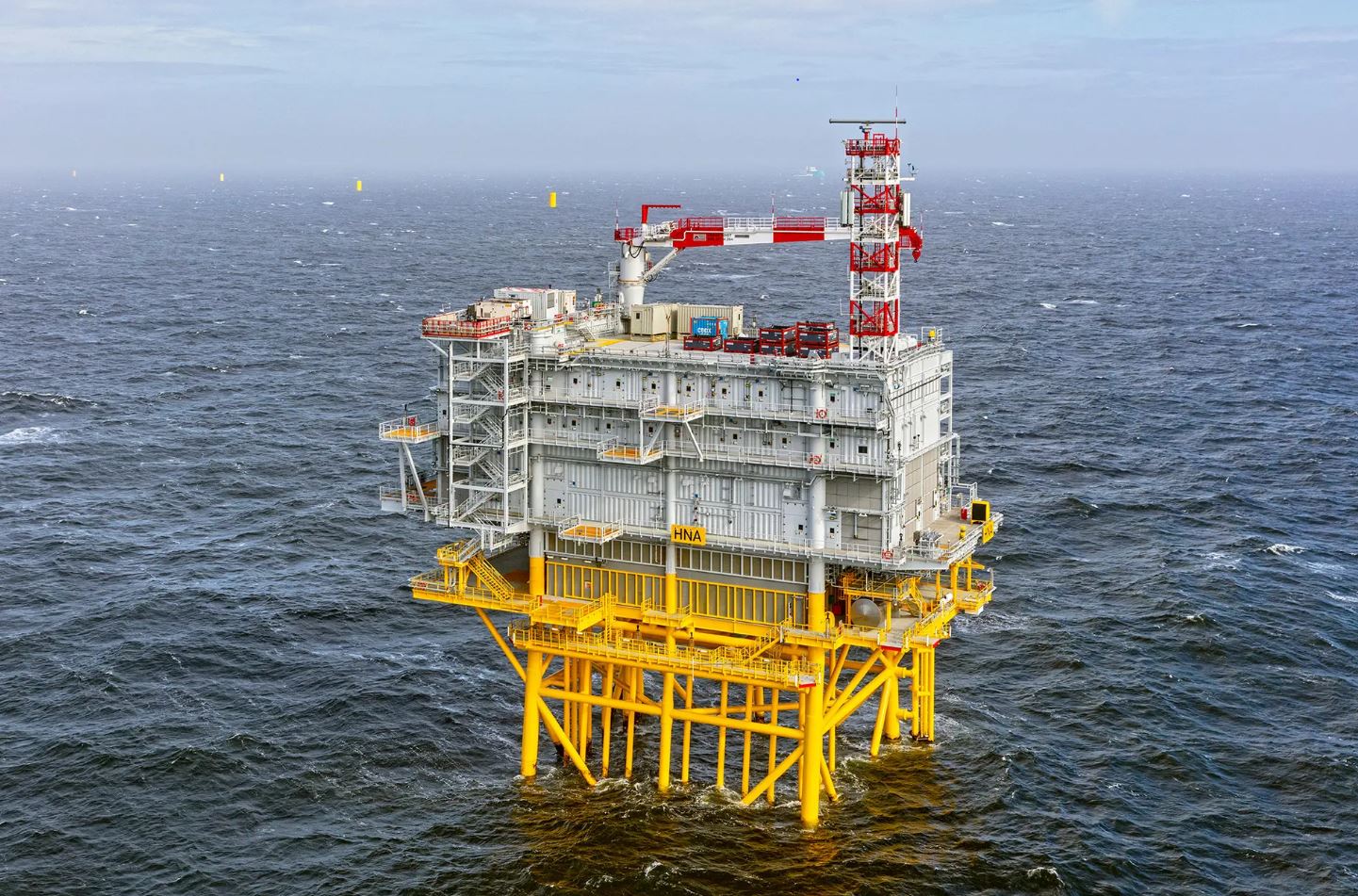 Now the wind farm’s operator, CrossWind, can connect the 69 Siemens Gamesa’s SG 11.0-200 DD 11 MW wind turbines to the offshore substation located some 20 kilometres off the coast of Egmond aan Zee.
Now the wind farm’s operator, CrossWind, can connect the 69 Siemens Gamesa’s SG 11.0-200 DD 11 MW wind turbines to the offshore substation located some 20 kilometres off the coast of Egmond aan Zee.Following the last series of tests, grid operator TenneT received the “grid ready” certificate on 31 March.
“This means that the complete connection – from our transformer platform at sea to the high-voltage substation along the A9 motorway near Beverwijk – is officially ready to bring green energy ashore. In good cooperation with the contractors, the authorities involved and the environment, this project was carried out within time, scope and budget,” said Arjan Dams, project director of the Hollandse Kust Noord, West Alpha, and West Beta project.
From the offshore substation, the electricity from Hollandse Kust Noord comes ashore at the beach of Heemskerk via two subsea cables.
From there, the cables pass under the dunes and the electricity, via the first part of the underground cable connection on land, arrives at the new transformer station in Wijk aan Zee. From there, the power is fed underground about ten kilometres away by Tennet at the correct voltage into the national high-voltage grid.
In November last year, Jan De Nul Group completed the first part of the cable installation works to connect the Hollandse Kust Noord wind farm to the Dutch mainland.
The 220-kV high-voltage tests of both sea and land cables for Hollandse Kust (noord) were successfully completed as well, from the onshore substation to the substation located 18 kilometres offshore, according to the company.
The cable installation vessel Isaac Newton installed the cables on the seabed.
In spring 2021, the cable installation vessel Isaac Newton collected the first lot of 90 kilometres of sea cable from its consortium partner LS Cable & System in South Korea. After arriving in the Netherlands, Isaac Newton installed four different sea cables, starting from the beach.
The offshore substation topside was installed on its jacket foundation in October last year.
The Hollande Kust Noord offshore wind project will be built and operated by the CrossWind consortium between Shell and Eneco, which won the tender in July 2020, without government subsidies.
The consortium plans to have the offshore wind farm operational in 2023, from when it will be generating at least 3.3 TWh per year.
Hollandse Kust West Alpha Substation Topside to Be Installed This Summer
TenneT also announced that it has laid the underground cables for the next two offshore wind farms within this onshore project: Hollandse Kust West Alpha and Hollandse Kust West Beta.
The last part of the second subsea cable is currently being installed for the West Alpha grid connection.
“We installed the undercarriage 50 kilometers off the coast of Egmond aan Zee last year. This summer we will install the ready-made topside on top of it, after which it will be connected to the transformer station. Work on the west Beta cables will start on the beach of Velsen this autumn. That connection to the wind farm will be ready in 2026”, said Dams.
It has been agreed in the Energy Agreement that at least 4.5 GW of installed wind capacity will be realised by the end of 2023. It was commissioned by the government to realise five standardised grid connections of 700 MW each.
Since 2019, TenneT has delivered a connection from sea to land every year, the TSO said.
“Together with Hollandse Kust (noord), we will deliver the fifth and final 700 MW connection from the Offshore Wind Energy Roadmap 2023 this year, safely, within time and budget. Added together, the installed capacity of all offshore wind farms is then 4.7 GW. The Netherlands thus achieves the important objective in the Energy Agreement”, said Marco Kuijpers, director of Large Projects Offshore at TenneT.